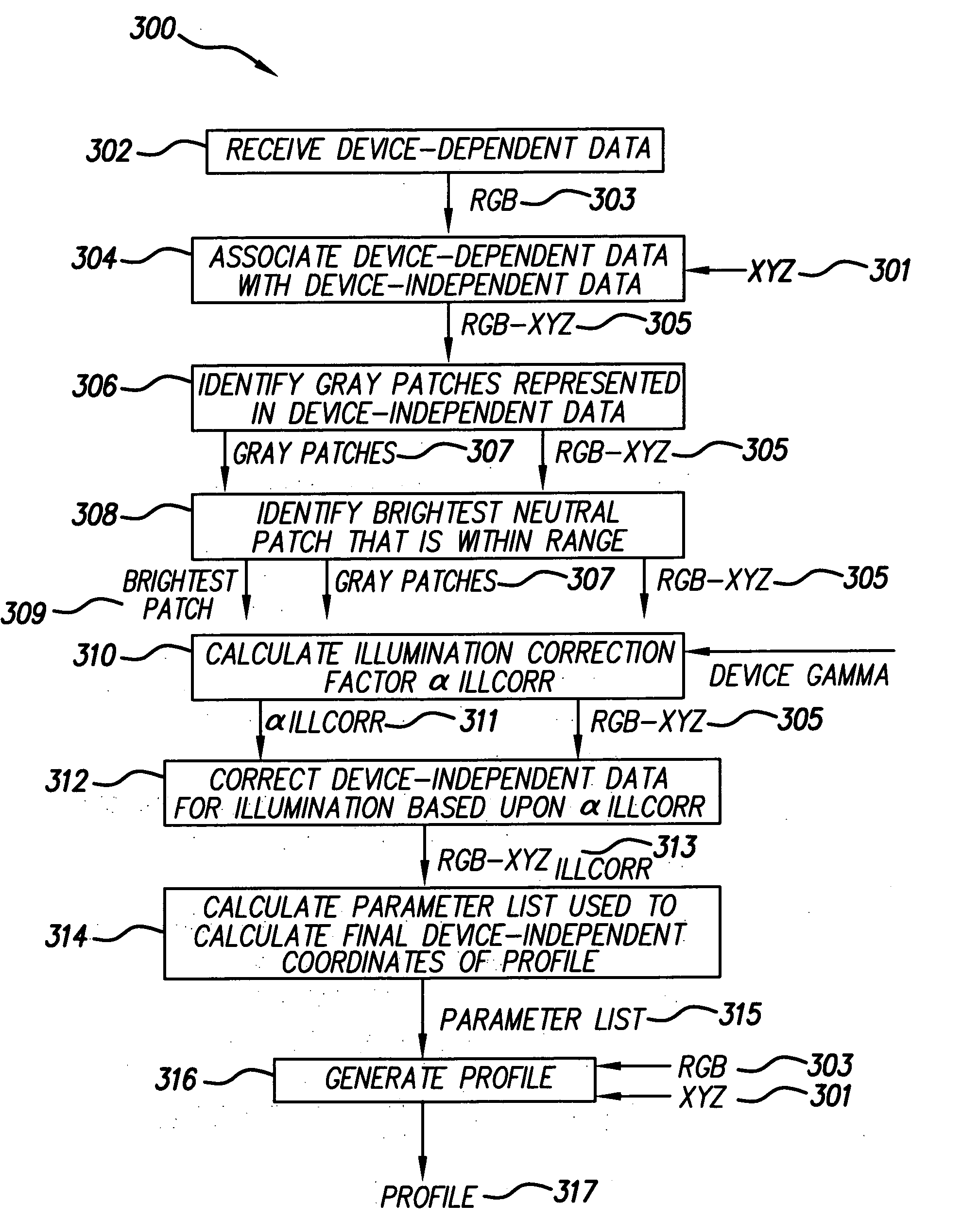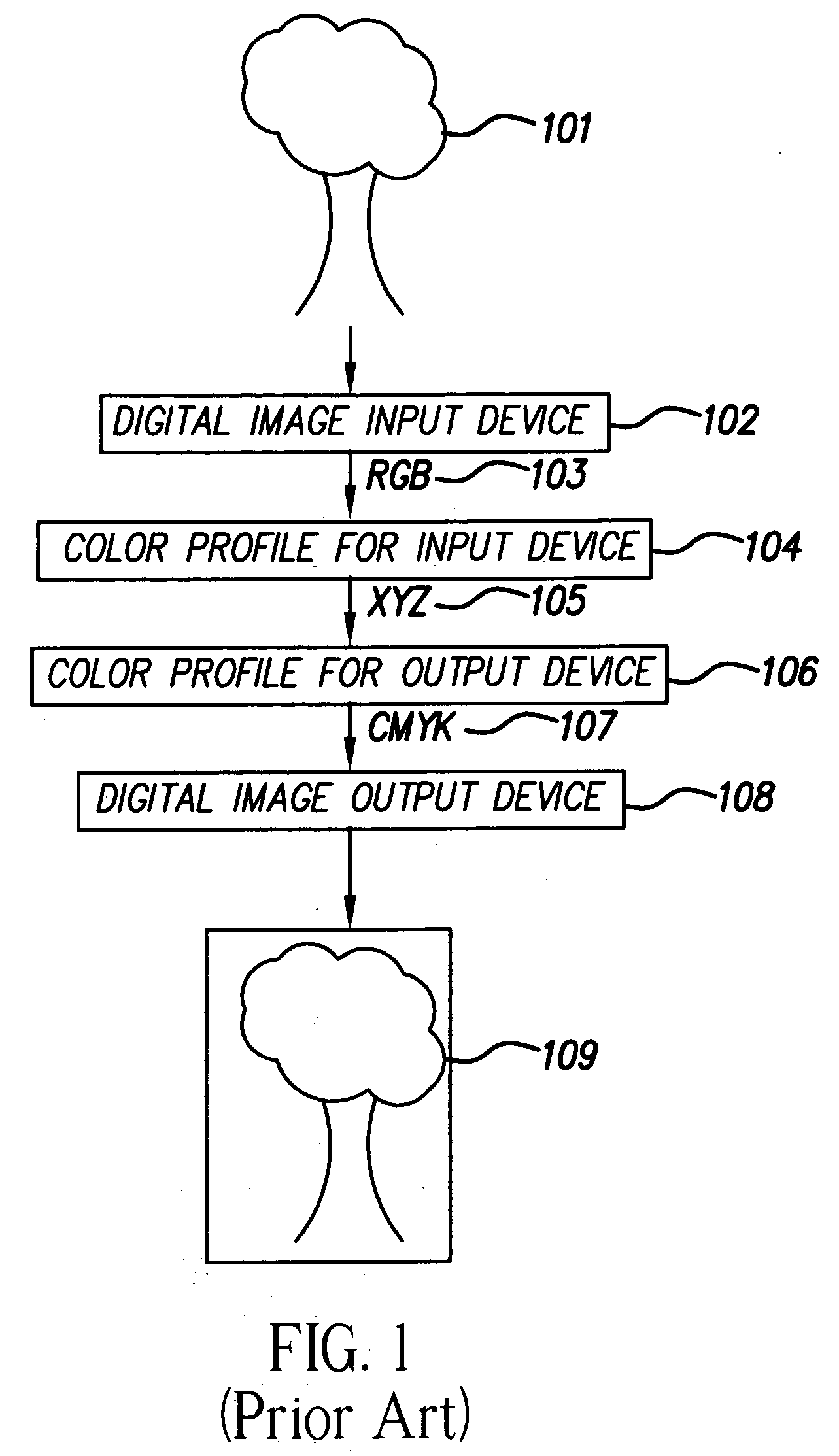Color correction techniques for correcting color profiles or a device-independent color space
a color space and color correction technology, applied in the field of color correction techniques for correcting device-independent color data in color management profiles, can solve the problems of further complicating matters, inability to generate a color profile that perfectly translates device-dependent data, and inability to prevent the introduction of artifacts or image corruption, so as to prevent the introduction of artifacts and prevent image corruption
- Summary
- Abstract
- Description
- Claims
- Application Information
AI Technical Summary
Benefits of technology
Problems solved by technology
Method used
Image
Examples
Embodiment Construction
[0021] The present invention corrects one or more selected regions of color in a device-independent color space, such that the magnitude of the corrections diminish as colors in the color space move away from the selected region being corrected. Accordingly, adjustments to regions of color in a device-independent color space may be made, such that the adjustments pose substantially no risk of introducing artifacts or unwanted corruption of subsequently generated images. The present invention has been shown to be useful in correcting both small color discrepancies, i.e., on the order of 2-3 delta E, or large color discrepancies, i.e., on the order of 20-30 delta E.
[0022]FIG. 2 illustrates a system 200 for generating a color profile for a digital-image input device, according to an embodiment of the present invention. The system 200 may include a digital-image input device 202 communicatively connected to a computer system 204, which is communicatively connected to a data storage sys...
PUM
 Login to View More
Login to View More Abstract
Description
Claims
Application Information
 Login to View More
Login to View More - R&D
- Intellectual Property
- Life Sciences
- Materials
- Tech Scout
- Unparalleled Data Quality
- Higher Quality Content
- 60% Fewer Hallucinations
Browse by: Latest US Patents, China's latest patents, Technical Efficacy Thesaurus, Application Domain, Technology Topic, Popular Technical Reports.
© 2025 PatSnap. All rights reserved.Legal|Privacy policy|Modern Slavery Act Transparency Statement|Sitemap|About US| Contact US: help@patsnap.com



